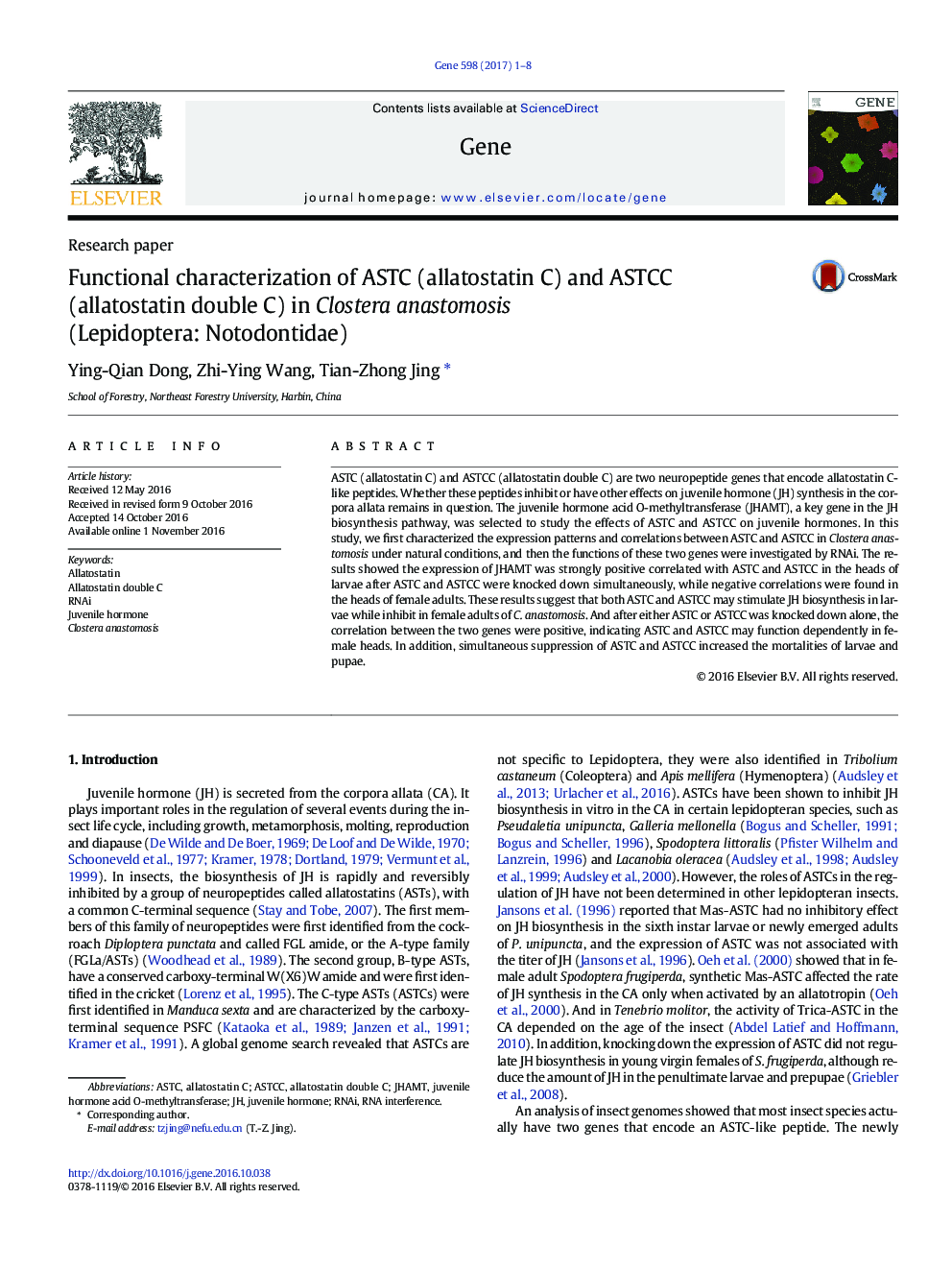| کد مقاله | کد نشریه | سال انتشار | مقاله انگلیسی | نسخه تمام متن |
|---|---|---|---|---|
| 5589894 | 1569838 | 2017 | 8 صفحه PDF | دانلود رایگان |

- The physiological effect of insect allatostatin double C (ASTCC) was characterized in Lepidoptera for the first time.
- ASTC and ASTCC may stimulate JH biosynthesis in larvae while inhibit JH biosynthesis in female adults.
- In female heads, ASTC and ASTCC may function dependently but not in tandem.
- Simultaneous suppression of ASTC and ASTCC increased the mortalities of larvae and pupae.
ASTC (allatostatin C) and ASTCC (allatostatin double C) are two neuropeptide genes that encode allatostatin C-like peptides. Whether these peptides inhibit or have other effects on juvenile hormone (JH) synthesis in the corpora allata remains in question. The juvenile hormone acid O-methyltransferase (JHAMT), a key gene in the JH biosynthesis pathway, was selected to study the effects of ASTC and ASTCC on juvenile hormones. In this study, we first characterized the expression patterns and correlations between ASTC and ASTCC in Clostera anastomosis under natural conditions, and then the functions of these two genes were investigated by RNAi. The results showed the expression of JHAMT was strongly positive correlated with ASTC and ASTCC in the heads of larvae after ASTC and ASTCC were knocked down simultaneously, while negative correlations were found in the heads of female adults. These results suggest that both ASTC and ASTCC may stimulate JH biosynthesis in larvae while inhibit in female adults of C. anastomosis. And after either ASTC or ASTCC was knocked down alone, the correlation between the two genes were positive, indicating ASTC and ASTCC may function dependently in female heads. In addition, simultaneous suppression of ASTC and ASTCC increased the mortalities of larvae and pupae.
Journal: Gene - Volume 598, 20 January 2017, Pages 1-8